Can a granite countertop be cut after installed?
Table of Contents
Toggle- Can a granite countertop be cut after installed?
- What does this article cover?
- Quick answer
- Why do people cut granite after installation (common scenarios)
- The reality: tools, methods, and practical steps
- Safety & legal/regulatory landscape (why dust control matters)
- Granite vs. engineered quartz & marble — differences for cutting
- Warranties, finishes, and hidden risks
- Hiring an on-site cutting service — when it makes sense
- Cost considerations (ballpark)
- Step-by-step safe approach for homeowners (short checklist)
- Data & trends shaping the industry
- Case note: trimming a granite countertop for a new stove
- Final recommendations (short)
- FAQ — Google hot-search style (5 items)
- Semantic closure
What does this article cover?
- Can granite be cut in place? — Practical, yes, with caveats.
- How: wet cutting, diamond tools, angle grinders, core bits, and controlled routers.
- Why safety matters: crystalline silica exposure, legal controls (OSHA), and on-site mitigation (wet methods, LEV, HEPA vacuum).
- When to call pros: warranty, adjacent finish risk, complex cuts (sink/stove), or when engineered stone/quartz is involved.
- Costs & timelines: onsite cutting services, equipment hire vs. replacement, regional price drivers.
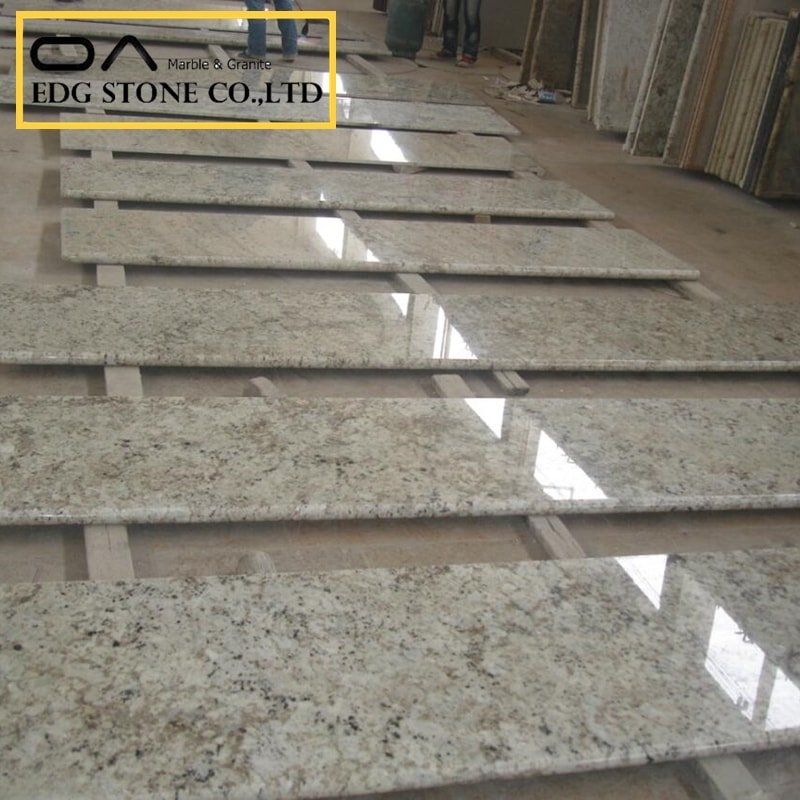
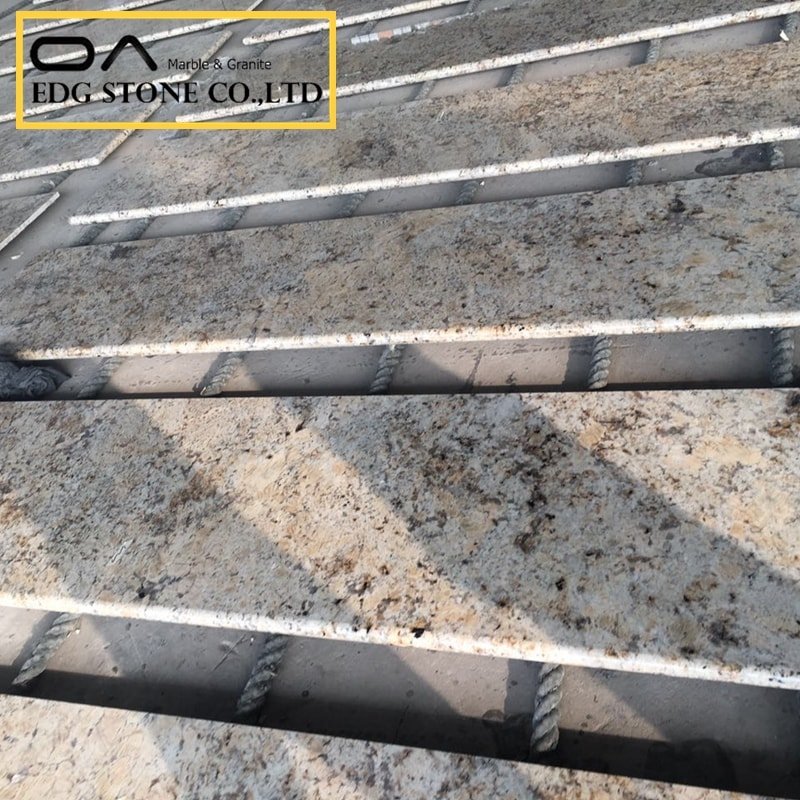
Quick answer
Yes — granite countertops can be cut after they are installed, but it’s a specialist task. The process is feasible for trimming for a new stove, enlarging a sink opening, or making a last-minute adjustment, but it must be done with the right tools and dust controls to avoid damage, health risks, and warranty/insurance problems. Professional fabricators frequently perform on-site cuts using wet cutting and local exhaust ventilation to meet safety standards.
Why do people cut granite after installation (common scenarios)
Trim an island or run to fit a replacement stove or range.
Enlarge or refine an existing sink cutout (drop-in → undermount changes).
Create an appliance passthrough or vent cutout after the cabinets are in.
Repair or modify edges and overhangs after a renovation.
Make emergency adjustments when moving appliances or changing layouts.
Each scenario changes the risk profile — sink or stove cuts usually require more precision and may demand cutting underneath cabinetry or over finished floors.
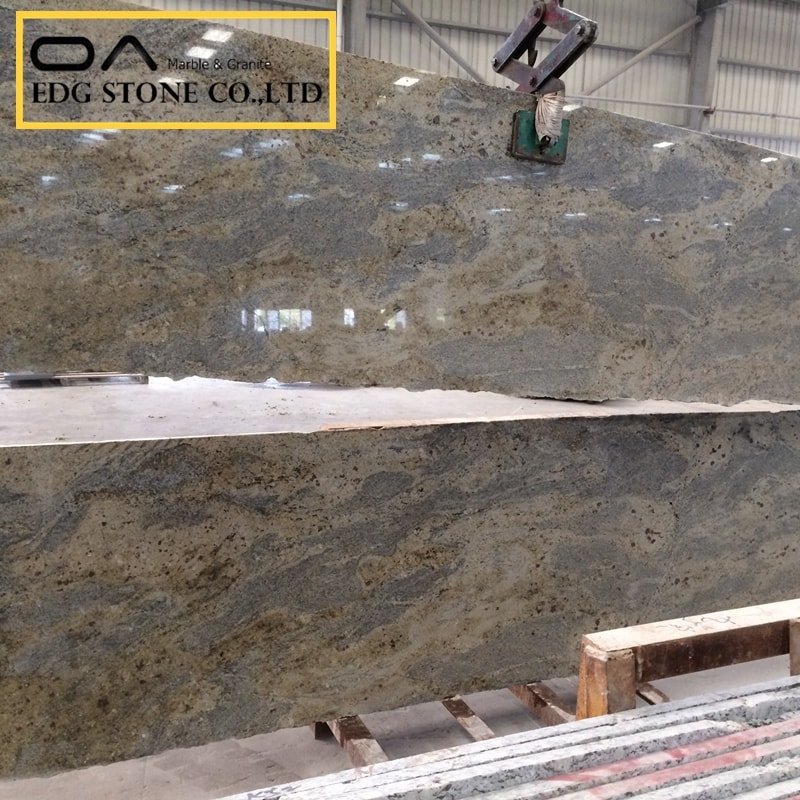
The reality: tools, methods, and practical steps
Primary cutting methods are used in place
Wet cutting with a handheld circular saw or wet saw — Diamond blade + continuous water reduces airborne dust and cools the blade; best for straighter, long cuts when there’s room to run the saw.
Angle grinder with diamond cup wheel/cutoff wheel — Good for small trims and shaping; higher dust if used dry, so couple with wet-feed or vacuum shrouds.
Core drilling — For round cutouts (faucets, gas lines); use diamond core bits and wet-feed where possible.
Portable bridge saw or track saw (on temporary rails) — For large slabs, fabricators sometimes set up temporary rails to reproduce shop-quality cuts on-site.
Router with diamond bit — For finishing edges and smoothing cut profiles (after the rough cut).
Hand tools and polishing pads — For finishing, smoothing, and chamfering edges.
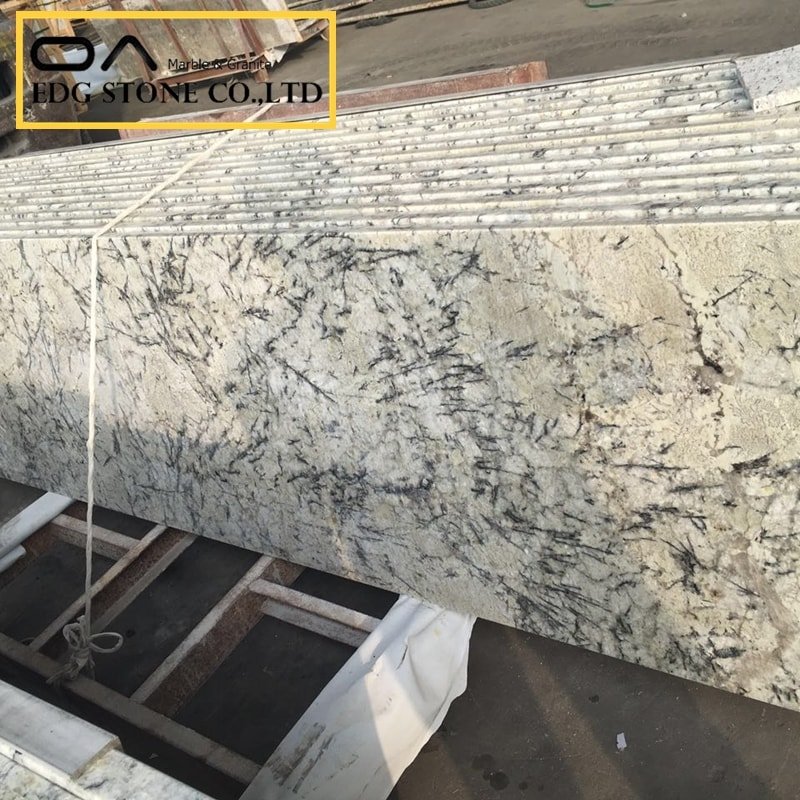
General steps for an installed cut
Protect cabinetry, floors, appliances, and finishes with plastic, plywood, and masking tape.
Mark cut precisely (use templates if necessary).
Use wet cutting where practical; otherwise, use tool-mounted LEV and HEPA-filtered vacuums.
Cut slowly, support the slab to avoid vibration/chipping.
Finish edge with diamond pads or router, then polish/seal the exposed edge.
Clean with a HEPA vacuum and wet wipe to remove settled dust.
Industry guides and fabricator blogs confirm these methods — but emphasize that on-site wet cutting sometimes isn’t practical if careful protection of cabinets and floors is required; in those cases, partial disassembly and shop recut is safer.
Safety & legal/regulatory landscape (why dust control matters)
Cutting natural stone produces respirable crystalline silica (RCS). RCS causes silicosis, increased lung cancer risk, COPD, and kidney disease. Because of these risks, regulators have tightened controls:
OSHA’s respirable crystalline silica standard (construction) requires employers to limit exposures and implement controls. For countertop work, wet methods, and local exhaust ventilation (LEV) are commonly recommended controls. Employers must follow exposure control methods and, where necessary, respiratory protection programs. osha.gov+1
OSHA guidance specifically addressing worker exposure during countertop operations recommends wet cutting where practicable and tool-mounted dust collection (HEPA vacuums) where wet cutting is impracticable (e.g., near finished cabinetry). osha.gov
Peer-reviewed studies show the combination of wetted blade + LEV reduces respirable crystalline silica exposures by an order of magnitude compared with wet blade alone. This is a strong evidence-based reason to use both measures together when cutting onsite. PMC
Practical takeaways: If a contractor or homeowner cuts granite onsite without proper controls, they risk worker health, OSHA citations (in commercial jobs), and potential litigation. Many professional fabricators will refuse to do on-site dry cuts for engineered stone or recommend partial disassembly to move slabs to a shop environment. osha.gov
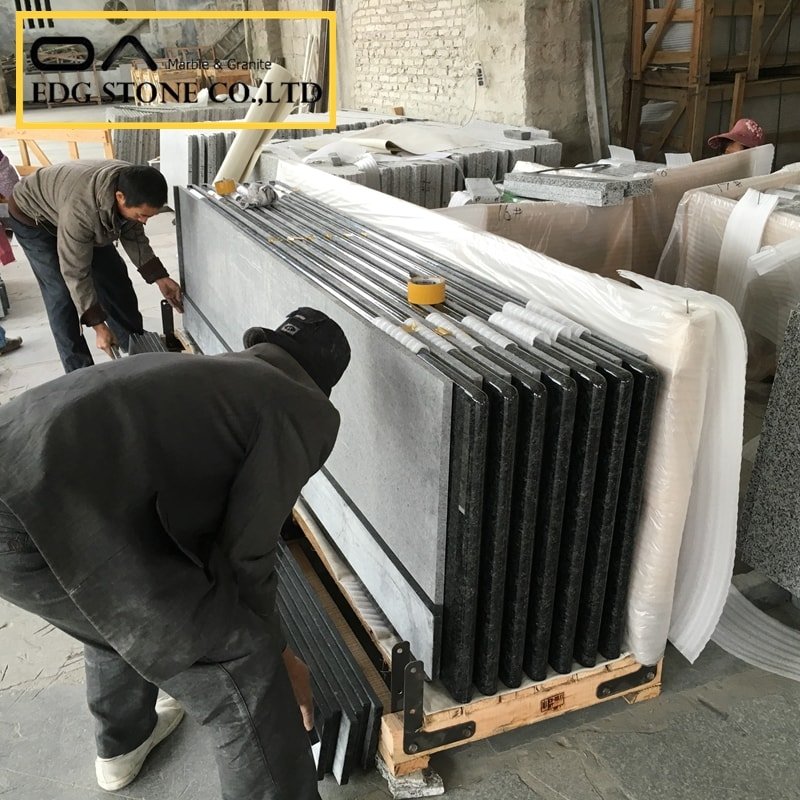
Granite vs. engineered quartz & marble — differences for cutting
Granite (natural stone): Hard, composed of minerals including silica; still produces silica dust on cutting, but sometimes behaves differently than engineered stone. Cutting natural granite is feasible with wet cutting and diamond tools.
Engineered quartz (quartz countertops): Often >90% crystalline silica bound in resin — cutting can generate extremely high silica exposures; some jurisdictions treat engineered stone jobs with extra caution, and many fabricators require shop cuts with robust control systems. stacks.cdc.gov+1
Marble/soft stones: Produce less silica but still generate respirable dust and require dust control.
Because engineered quartz can be more hazardous for silica exposure, many fabricators will not recommend or permit in-place dry cutting for quartz — treat quartz modifications as requiring full dust control or shop recut. PMC+1
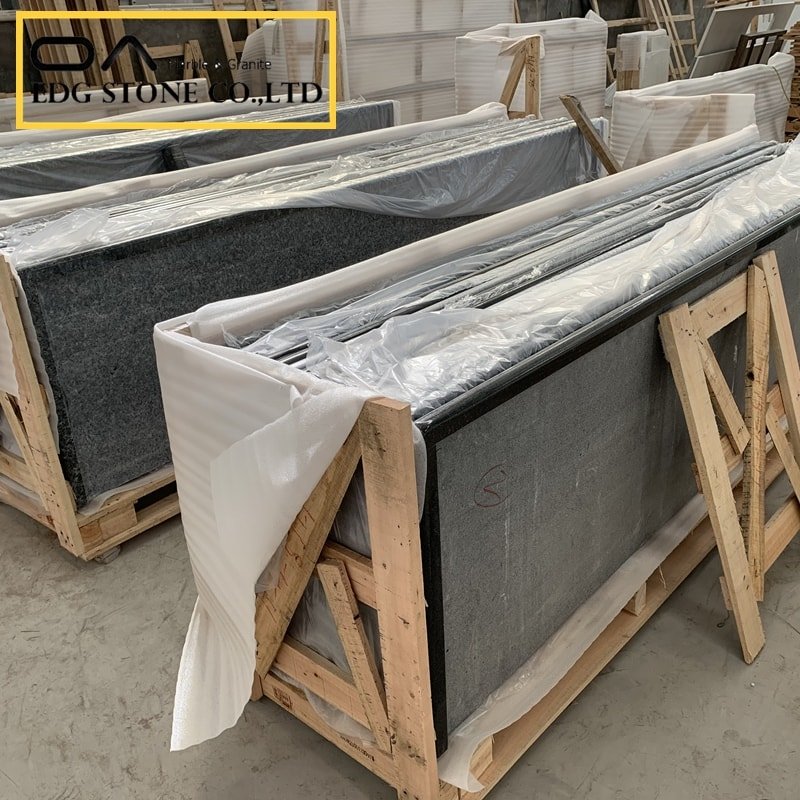
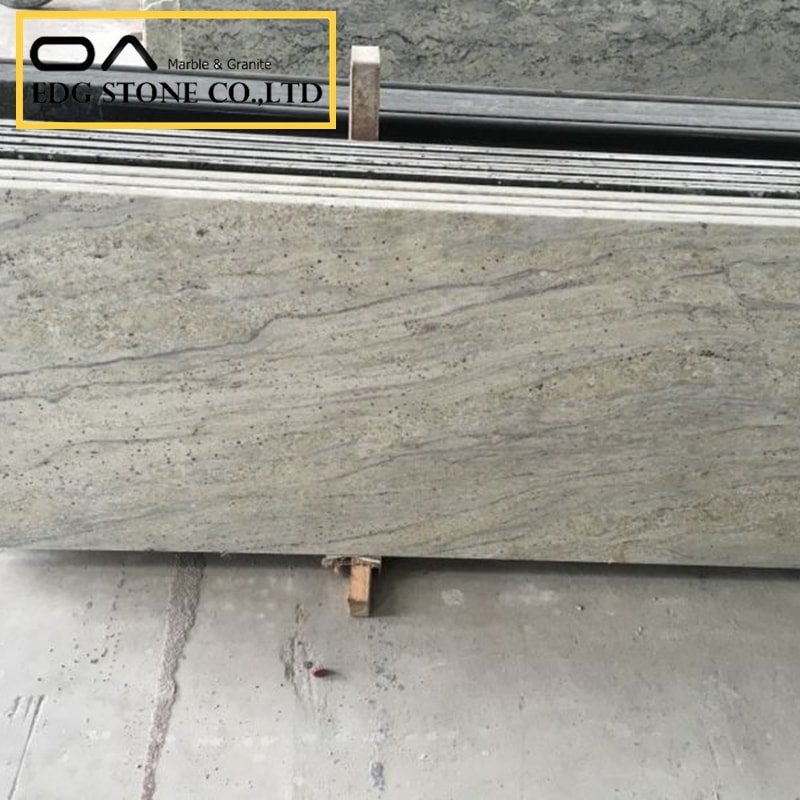
Warranties, finishes, and hidden risks
Cutting in place can void manufacturer or fabricator warranties if it’s not performed to their standards. Always check your warranty terms before cutting.
Movement, vibration, or improper support can crack a slab — installed granite relies on adhesive and supports; a bad cut or undermining support can lead to cracking or structural failure.
Water intrusion: Wet cutting near cabinets and substructures risks water damage. Use containment and protective coverings.
Hidden reinforcement or metal supports and undermount sink attachments can complicate cutting.
For these reasons, many professionals recommend removing the slab (or at least unsupported sections) and performing the cut in a controlled shop environment when possible.
Hiring an on-site cutting service — when it makes sense
Consider hiring professionals when:
The cut is complex (sink rework, stove trimming, induction venting).
You have engineered quartz or another high-silica product.
You want warranty-protected work.
The cut is visible and must be finished/polished to a high standard.
You prefer the lower-risk option versus partial replacement.
What to ask a fabricator/onsite cutter
Do you use wet cutting + LEV + HEPA-filtered cleanup? (If not, get another quote.) osha.gov+1
Do you have on-site insurance & warranty for modifications?
Can you provide references or before/after photos of similar jobs?
Will you protect and restore adjacent finishes?
Do you issue a written quote with scope and disposal of waste?
Cost considerations (ballpark)
Costs vary by region and job complexity. Typical factors:
Complexity of cut (straight trim vs. sink/enlargement).
Need for edge finishing and polishing.
Time/cost for protection of surrounding finishes.
Disposal & HEPA cleanup.
Whether slab removal to the shop is required.
A simple trim might be relatively inexpensive (labor + diamond blade rental), while precise sink enlargements or fabricated new cutouts (polish, finished edge, sealed) can approach the cost of a partial slab replacement when you factor in shop time and finishing. Always get multiple quotes from reputable fabricators.
Step-by-step safe approach for homeowners (short checklist)
Confirm warranty and manufacturer guidance.
Evaluate whether the slab can be removed to shop for a safer cut.
If cutting in place, insist on wet cutting and tool-mounted LEV or HEPA vacuum (per OSHA/NIOSH guidance). osha.gov+1
Protect nearby finishes (drop cloths, plastic, plywood).
Use diamond tools, cut slowly, support the slab, and use clamps or braces.
Have a trained operator perform finishing and polishing; seal exposed edges afterwards.
Clean with HEPA vacuum and damp wiping; dispose of slurry responsibly.
Data & trends shaping the industry
Regulatory enforcement on silica exposure has increased inspections in stone product manufacturing and construction sectors in recent years; OSHA and national bodies urge engineering controls and documented exposure methods. Employers are pushed to adopt combined wet + LEV controls where possible. osha.gov+1
Research continues to show that wet cutting alone reduces dust, but that adding LEV can reduce exposures by up to 10x — a strong engineering-control validation that many fabricators now adopt as standard practice.
Market response: more fabricators are offering certified “onsite cutting” packages that include enclosed cutting shrouds, HEPA vacuums, and written exposure-control plans to comply with OSHA and to reassure homeowners.
Case note: trimming a granite countertop for a new stove
Scenario: homeowner replaces a 30″ range with a 36″ and needs a 6″ trim in place.
Best approach: remove the slab to the shop if the slab design and cabinet layout allow. If not feasible, hire a fabricator who can perform a precision trim with a diamond blade, use wet cutting and LEV, protect the cabinet face and flooring, then finish the exposed edge with a router and diamond pads. Confirm that the cut won’t undermine supports or cause a crack line.
Final recommendations (short)
Cutting installed granite is possible, but assess the risk vs. reward.
Prioritize safety: wet cutting + LEV + HEPA cleanup is the gold standard. osha.gov+1
When in doubt, remove the slab and cut in shop conditions or hire an experienced fabricator with documented exposure controls and insurance.
Check warranty language and local regulations before any in-place modification.
FAQ — Google hot-search style (5 items)
1. Can you cut already installed granite?
Yes — with diamond tools and proper dust control (wet cutting or LEV + HEPA). For complex or warranty-sensitive jobs, shop recut is recommended.
2. How do you cut granite countertops already installed for a new stove?
Use a diamond blade for straight trims (wet cutting when possible), support the slab to avoid vibration, protect finishes, and finish the edge smoothly with diamond pads or a router; consider shop recut if possible.
3. Can you cut on quartz countertops?
Technically, yes, but engineered quartz generates very high silica exposures; many fabricators insist on shop cutting with robust dust controls or will refuse onsite dry cutting. Follow OSHA/NIOSH guidance.
4. Are there onsite granite cutting services near me, and how do I find them?
Search for local stone fabricators with “onsite cutting” or “field modifications” services, ask for evidence of dust control (wet + LEV) and insurance, and request references and warranty coverage before hiring.
5. Will cutting granite in place void warranties?
Possibly — many warranties require certified fabricators and shop conditions. Always check your slab and fabricator warranty before altering an installed countertop.
Semantic closure
How / Why / What / Options / Considerations:
How: Use diamond cutting tools with wet-feed and, where wet cutting is impracticable, tool-mounted local exhaust ventilation (LEV) and HEPA vacuum cleanup.
Why: To fit appliances, change layouts, or update fixtures; but cutting generates respirable crystalline silica, which creates health and compliance obligations under OSHA and local rules.
What to choose: For minimal risk, remove the slab to the shop for cutting. For onsite modifications: hire fabricators offering documented wet+LEV procedures and warranty assurances.
Consideration (detailed): Evaluate warranty terms, adjacent finish risk, regulatory compliance (OSHA silica standard), and cost trade-offs. If engineered quartz is used, demand strict dust engineering controls or shop procedures.
50 SEO tags (include purchase intent/manufacturer terms where relevant):
can you cut already installed granite, can granite be cut after installed, how do you cut granite countertops already installed, can granite counter be cut after installed, can granite countertop be cut in place, can a granite countertop be cut after they are installed, can you cut granite countertops after they are installed, trimming granite countertop for new stove, how to cut granite by hand, how to cut granite for sink, can you cut on quartz countertops, granite countertop modifications near me, can you cut on marble countertops, onsite granite cutting service near me, granite onsite cutting service, countertop field modification, wet cutting granite, diamond blade granite cutting, silica safety granite cutting, OSHA silica countertop guidance, NIOSH stone countertop controls, shop vs onsite countertop cutting, stone fabricator onsite, granite recut service, sink cutout enlargement, kitchen remodel countertop trim, granite edge polishing onsite, professional granite cutting, granite cutting cost, cut granite without cracking, cutting granite for undermount sink, cutting granite near cabinets, quartz countertop onsite cutting, engineered stone cutting safety, stone countertop LEV, HEPA cleanup granite, countertop cutting warranties, granite fabrication manufacturer, granite factory recut service, wholesale stone modification, stone slab adjustments, cut granite for range, cut granite for cooktop, field cutting best practices, granite cutting rental tools, how to trim granite countertop, granite slab modification, local stone fabricator, certified stone fabricator service.
